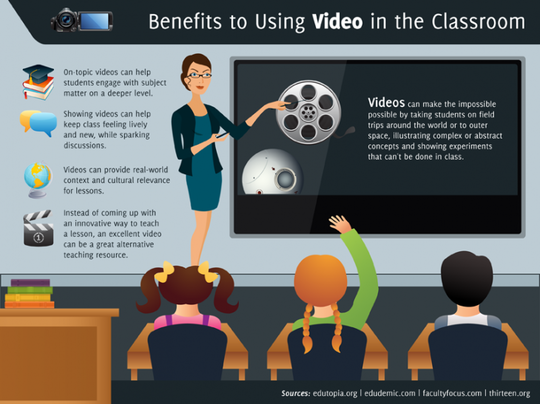
Over the years of integrating multimedia into my sociology courses, I’ve developed a number of rules of thumb to guide the use of video and video clips in the classroom. Any criticisms, suggestions, and/or additions would be most welcomed.
1. Determine general relevance of video: does it advance learning? Consider such questions as: Does it stimulate students to think about the topic, perhaps in a novel way? Does it appropriately illustrate or amplify? Worst case: it diminishes learning (e.g., might it confuse, frustrate, or talk down to?). Is it appropriate to course, level of learning, and student population?
2. Evaluate video relative to student, university, and community standards. Might students see it as offensive, disparaging, or otherwise objectionable? Note: your point in using it may be exactly to challenge or provoke. However, be aware of possible fall-out. If potential is high that students will be disturbed, it’s crucial to provide meaningful pre-showing discussion, placing the video in learning context.
3. In what venue will students watch video? Will it be in or out of class? (Note: clips integrated into class presentation also can be linked to syllabus for online viewing). This decision might be guided by: a) importance that students see it, in combination with b) length of class time you can reasonably devote to it (if longer than 5 minutes or so, I’ll usually place it online, unless it is critical to share in class). 4. How will it fit into the course relative to evaluation? If viewed out of class, will it be required or optional? If required, will you in some way provide test questions relating to it? If optional, might you attach some kind of extra-credit to motivate students to view it? Note: if video is not indicated on syllabus at beginning of semester will you require viewing? (Some colleges stipulate that the syllabus is a contract. Therefore, extra requirements cannot be imposed after the semester begins. If this is the case, you might list as optional.) 5. If video is to be viewed out of class, how will you orient students to it? Will you provide a set of questions for students to address while viewing? (Note: without such guides, students may not see what you want them to be sure to see.) 6. If the video is to be viewed out of class, also consider the total length of viewing time you are imposing in relation to the time constraints facing students. Obviously this will vary by student population. You might assign shorter viewing lengths where they are likely to be working at outside jobs. 7. Determine also if there may be difficulties or hardships imposed on students relative to outside viewing. For example, to what extent do students have access to high-speed Internet service? 8. Note that a video may not be available at the time you want to show it (e.g., YouTube clips are particularly vulnerable to removal). Consider either downloading or have in mind an alternative, back-up video. 9. Inform students about technical considerations in using video. For example, at the beginning of the semester, warn about pop-up blockers and also indicate on syllabus necessary software downloads for their computers. Provide links on syllabus to downloads. Tell students importance of infoming you if they’re having troubles with videos. Remind students that links often break and that videos may be taken off Web. Ask them to let you know if video is not available. 10. Review the particular version of the video to be used beforehand. This cannot necessarily be determined by title. If you’ve seen it before, note the version you now have access to may not be same (e.g., YouTube clips are often extensively edited by contributors). Michael V. Miller Michael V. Miller is a sociologist at the University of Texas at San Antonio. His current research in this area focuses on how academic disciplines can best incorporate online multimedia and freeware media-authoring tools into instruction. For further reading, see: “A system for integrating online multimedia into college curriculum” and “Integrating online multimedia into college course and classroom.”
princess
3/8/2018 05:33:09 am
pls teach me basic elements pls pls pls pls Comments are closed.
|
.
.
Tags
All
|

 RSS Feed
RSS Feed